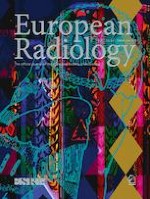Erschienen in:

18.03.2021 | COVID-19 | Chest
Zur Zeit gratis
AI detection of mild COVID-19 pneumonia from chest CT scans
verfasst von:
Jin-Cao Yao, Tao Wang, Guang-Hua Hou, Di Ou, Wei Li, Qiao-Dan Zhu, Wen-Cong Chen, Chen Yang, Li-Jing Wang, Li-Ping Wang, Lin-Yin Fan, Kai-Yuan Shi, Jie Zhang, Dong Xu, Ya-Qing Li
Erschienen in:
European Radiology
|
Ausgabe 9/2021
Einloggen, um Zugang zu erhalten
Abstract
Objectives
An artificial intelligence model was adopted to identify mild COVID-19 pneumonia from computed tomography (CT) volumes, and its diagnostic performance was then evaluated.
Methods
In this retrospective multicenter study, an atrous convolution-based deep learning model was established for the computer-assisted diagnosis of mild COVID-19 pneumonia. The dataset included 2087 chest CT exams collected from four hospitals between 1 January 2019 and 31 May 2020. The true positive rate, true negative rate, receiver operating characteristic curve, area under the curve (AUC) and convolutional feature map were used to evaluate the model.
Results
The proposed deep learning model was trained on 1538 patients and tested on an independent testing cohort of 549 patients. The overall sensitivity was 91.5% (195/213; p < 0.001, 95% CI: 89.2–93.9%), the overall specificity was 90.5% (304/336; p < 0.001, 95% CI: 88.0–92.9%) and the general AUC value was 0.955 (p < 0.001).
Conclusions
A deep learning model can accurately detect COVID-19 and serve as an important supplement to the COVID-19 reverse transcription–polymerase chain reaction (RT-PCR) test.
Key Points
• The implementation of a deep learning model to identify mild COVID-19 pneumonia was confirmed to be effective and feasible.
• The strategy of using a binary code instead of the region of interest label to identify mild COVID-19 pneumonia was verified.
• This AI model can assist in the early screening of COVID-19 without interfering with normal clinical examinations.